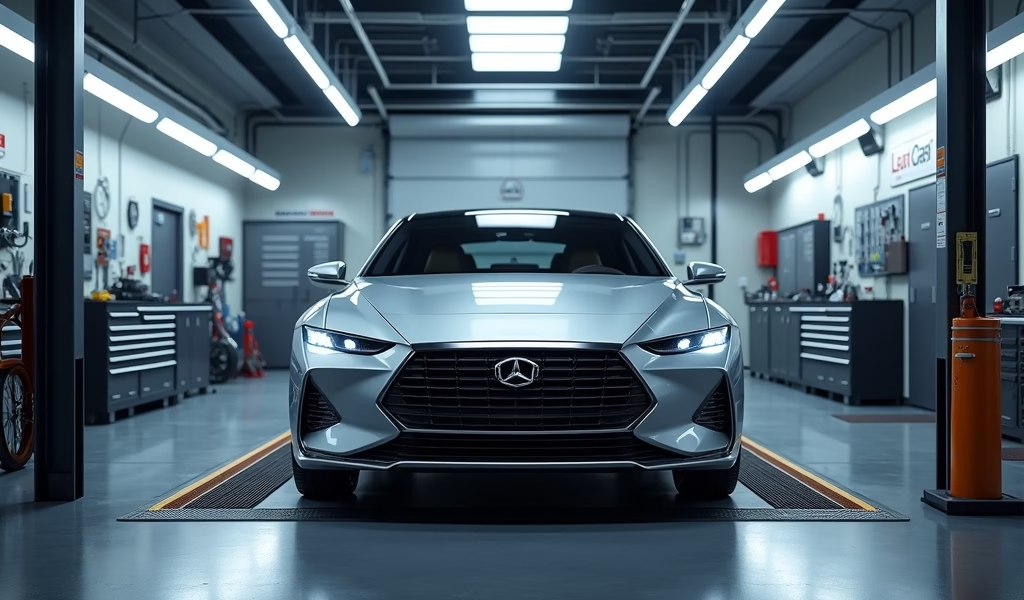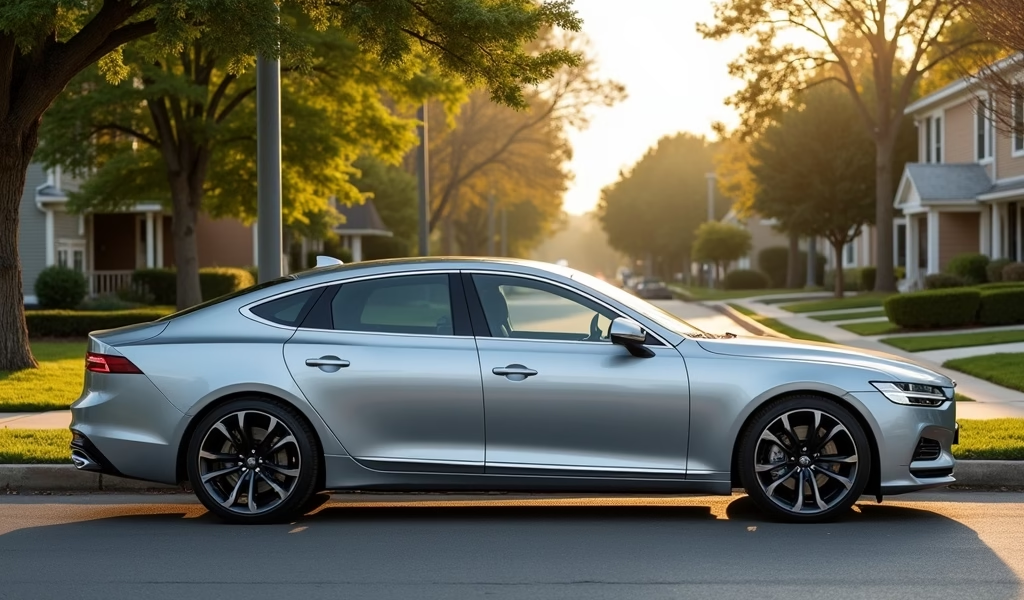Overview
This article provides five strategic tips for selecting vehicles that attract lower insurance premiums, including choosing cars with high safety ratings, effective anti-theft features, lower repair costs, favorable insurance classifications, and balancing performance with practicality. The key message is that your vehicle selection significantly impacts insurance costs, with potential savings of $500-1,500 annually by choosing insurance-friendly models like family sedans and minivans over high-performance or luxury vehicles.
Table of Contents
- Understanding Car Insurance and Your Vehicle Choice
- Tip 1: Choose Vehicles with High Safety Ratings
- Tip 2: Consider Cars with Anti-Theft Features
- Tip 3: Opt for Models with Lower Repair Costs
- Tip 4: Look at Insurance Groups and Classifications
- Tip 5: Balance Performance with Practicality
- Conclusion: Making the Smart Choice
- Frequently Asked Questions
Understanding Car Insurance and Your Vehicle Choice
Finding the best car on insurance isn’t just about picking the cheapest policy – it starts with choosing the right vehicle. As a mechanic who’s seen how car choices directly impact insurance premiums, I can tell you that your vehicle selection matters more than most drivers realize.
Insurance companies don’t pick rates out of thin air. They use complex algorithms based on accident statistics, repair costs, and theft data for specific makes and models. Some cars naturally attract lower premiums while others will hit your wallet hard month after month.
The good news? You can make strategic choices when car shopping that will save you thousands over the years on full coverage car insurance. Many drivers focus only on the sticker price and monthly payments, completely overlooking the long-term insurance costs.
Let’s look at five expert tips that’ll help you find vehicles that insurance companies love – and reward with better rates. These insights come from years of working with customers who’ve learned these lessons the hard way.
Tip 1: Choose Vehicles with High Safety Ratings

Insurance companies love safe cars. It’s simple math – safer vehicles mean fewer claims and less severe injuries when accidents happen.
Look for models with top ratings from the Insurance Institute for Highway Safety (IIHS) and National Highway Traffic Safety Administration (NHTSA). Cars earning the IIHS Top Safety Pick+ designation or 5-star NHTSA ratings typically qualify for insurance discounts.
Modern safety features significantly impact your premiums. Vehicles equipped with automatic emergency braking, lane departure warning, blind spot detection, and adaptive cruise control often receive preferential rates from insurers. These technologies actively prevent accidents, making you a lower risk to insure.
When shopping, ask specifically about advanced driver assistance systems (ADAS) and how they’re integrated. Not all systems are created equal, and insurers know which ones genuinely reduce accident rates.
Family-oriented vehicles like minivans and midsize SUVs with excellent crash test scores generally receive some of the best insurance rates. These vehicles prioritize passenger protection and tend to be driven more cautiously than sports cars or luxury vehicles.
According to IIHS safety ratings, vehicles with good crash test performance can reduce injury claims by up to 40% compared to poorly rated vehicles. That’s a difference insurers definitely notice – and reward.
Tip 2: Consider Cars with Anti-Theft Features
Car theft costs insurance companies billions annually, and they pass these costs to policyholders. Vehicles with effective anti-theft systems get substantial premium discounts.
Modern immobilizer systems that prevent hot-wiring have dramatically reduced theft rates for newer models. If you’re buying used, look for vehicles manufactured after 2010, when sophisticated immobilizers became standard in most makes.
GPS tracking systems give insurers added confidence. These systems help recover stolen vehicles quickly, minimizing losses. Many newer models include these as standard features or affordable add-ons.
Some car brands historically have lower theft rates than others. Japanese and Korean manufacturers like Honda, Toyota, and Hyundai have invested heavily in anti-theft technology, resulting in cheaper car insurance rates for many of their models.
When comparing similar vehicles, ask dealers specifically about anti-theft features. Sometimes subtle differences exist between trim levels that can significantly impact insurance costs.
Cars with visible security features like steering wheel locks and window etching also deter thieves and may qualify for additional discounts. These simple additions signal to both thieves and insurance companies that you’re serious about vehicle security.
Tip 3: Opt for Models with Lower Repair Costs
Repair costs heavily influence insurance premiums. Vehicles that cost less to fix after accidents almost always enjoy lower rates.
Domestic brands typically have more affordable and accessible parts in North America, potentially reducing your premiums. Models from Ford, Chevrolet, and Dodge often cost less to repair than their European counterparts.
Popular models with wide parts availability generally cost less to insure. When parts are plentiful, repair shops can complete work faster and at lower costs, which insurers appreciate.
Bumper design matters more than most people realize. Cars with bumpers designed to minimize damage in low-speed collisions (the most common type of accident) often qualify for better rates. These designs prevent costly damage to critical components like radiators and headlight assemblies.
Some vehicles require specialized repair procedures or exotic materials that dramatically increase costs. For example, aluminum-body vehicles or cars with carbon fiber components require specialized repair equipment and training, driving up insurance costs.
Modular design, where components can be replaced individually rather than as entire assemblies, also reduces repair costs. This design philosophy is common in many Japanese and Korean vehicles, contributing to their insurance-friendly reputation.
The Highway Loss Data Institute reports that vehicles with low collision repair costs can have insurance premiums up to 25% lower than similar models with expensive repair profiles. That difference adds up quickly over years of ownership.
Tip 4: Look at Insurance Groups and Classifications
Insurance companies classify vehicles into groups based on risk factors. Understanding these classifications can help you choose a more insurance-friendly car.
In the US, most insurers use vehicle classifications developed by the Insurance Services Office (ISO). These groupings consider factors like vehicle size, weight, safety features, and performance capabilities.
Family sedans, minivans, and non-luxury SUVs typically fall into favorable insurance groups. Their combination of safety features, moderate performance, and reasonable repair costs make them attractive to insurers.
Engine power significantly impacts classification. Vehicles with higher horsepower-to-weight ratios face steeper premiums, regardless of other factors. This explains why the four-cylinder version of a model often costs less to insure than its six-cylinder counterpart.
Vehicle size matters too. Midsize vehicles often hit the sweet spot – large enough to provide good crash protection but not so large that they cause excessive damage to other vehicles in accidents.
Before finalizing your vehicle purchase, ask your insurance agent for quotes on different models you’re considering. Sometimes nearly identical vehicles can have surprisingly different insurance costs due to their group classifications.
According to insurance data, the difference between the lowest and highest insurance classification can result in premium variations exceeding 200%. That’s why researching insurance costs before purchase is just as important as comparing fuel economy or maintenance schedules.
Tip 5: Balance Performance with Practicality

High-performance vehicles almost always carry higher insurance premiums. Insurance companies know that powerful cars tend to be driven more aggressively and involved in more severe accidents.
Sporty models, even when not true performance cars, face insurance penalties. Their association with younger, higher-risk drivers affects rates even for older, more experienced motorists.
Luxury vehicles combine several insurance-unfriendly factors: high repair costs, specialized parts, and often higher performance capabilities. This triple threat makes them among the most expensive vehicles to insure.
Electric and hybrid vehicles present a mixed insurance picture. While they’re often driven more carefully and have lower accident rates, their specialized components and higher repair costs can offset these advantages.
Practical family vehicles consistently rank among the lowest car insurance rates across all manufacturers. Their combination of safety features, moderate performance, and reasonable repair costs makes them insurance darlings.
As Consumer Reports notes, the difference in annual premiums between a practical family sedan and a luxury performance model with similar purchase prices can exceed $1,500 annually. Over a five-year ownership period, that’s $7,500 – enough to fund a nice vacation or bolster your retirement savings.
Conclusion: Making the Smart Choice
Finding the best car on insurance requires balancing several factors. Safety ratings, anti-theft features, repair costs, insurance classifications, and vehicle type all play crucial roles in determining your premiums.
The smartest approach is considering insurance costs early in your car-buying process. Get quotes for different models you’re considering before making a final decision. What seems like a great deal on the sticker price might not look so appealing when you factor in years of higher insurance premiums.
Remember that insurance companies base rates on real-world data. Vehicles with lower premium costs generally have proven safety records and reasonable repair costs – qualities that benefit you beyond just insurance savings.
By making an informed choice, you can enjoy both a vehicle you love and insurance premiums that don’t break the bank. That’s a winning combination that will serve you well for years to come.
Frequently Asked Questions
Which car type generally has the lowest insurance rates?
Family sedans and minivans typically have the lowest insurance rates. These vehicles combine good safety ratings with moderate repair costs and are usually driven conservatively.
Do electric cars cost more to insure?
Yes, electric vehicles often cost more to insure due to their specialized components and higher repair costs. However, this is gradually changing as EVs become more mainstream.
How much can I save by choosing an insurance-friendly car?
The difference can be substantial, often $500-1,500 annually. Over a five-year ownership period, choosing an insurance-friendly car could save you $2,500-7,500.
Are newer cars always cheaper to insure than older ones?
Not necessarily. While newer cars have better safety features, they also cost more to repair. The sweet spot is often 3-5 year old vehicles with good safety ratings but lower replacement costs.
Does color affect my car insurance rates?
No, your car’s color doesn’t directly affect insurance rates. This is a common myth, but insurers don’t include color in their premium calculations.

